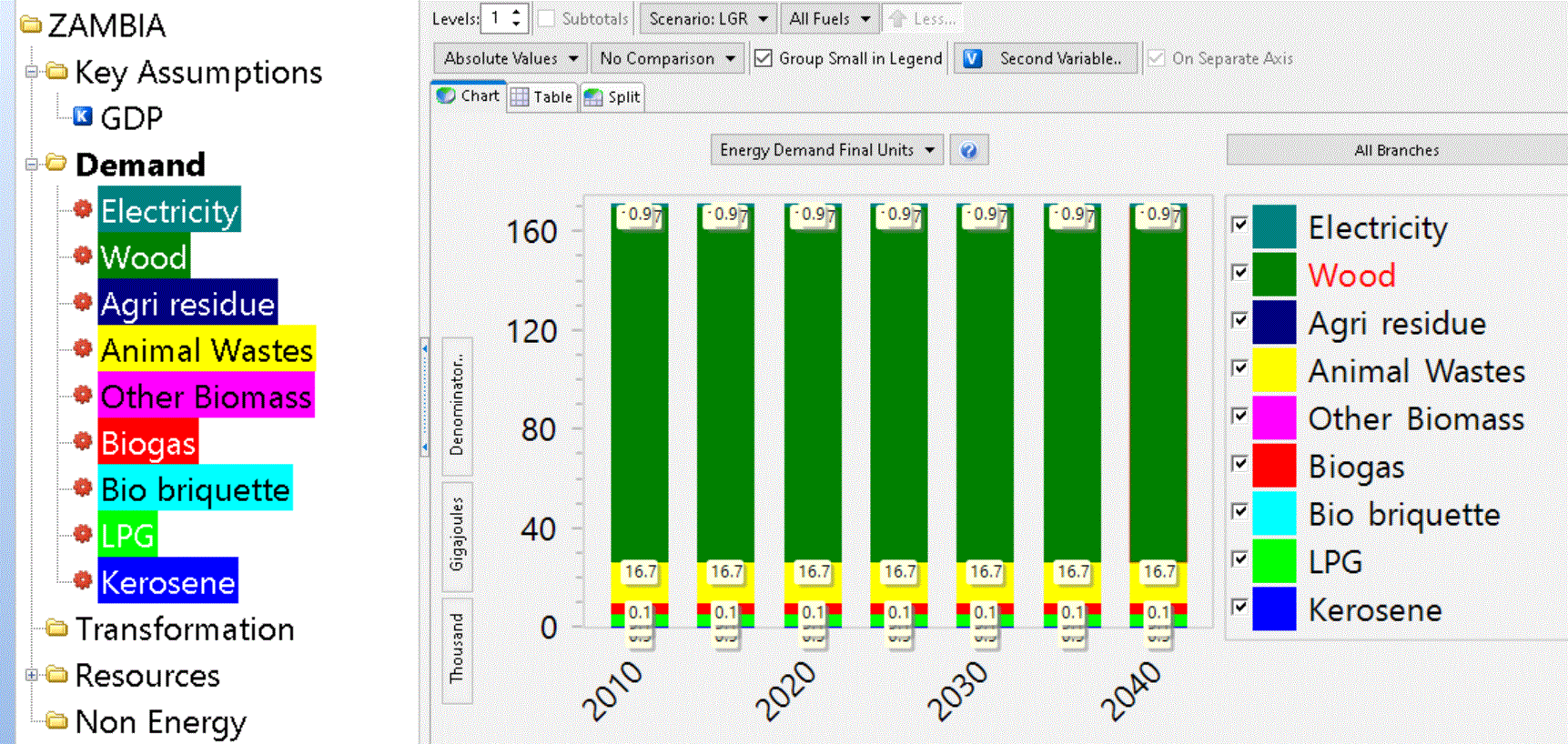Topic: Key assumptions Influence on Energy Demand Subscribe | Previous | Next
Arnold Mumba 11/4/2023
Hi all,
I want to model four scenarios based on GDP growth rates and illustrate how changes in GDP influence long-term energy demand. I have the baseline scenario with a GDP of 5%, the low growth (LGR) scenario with a GDP of 4%, the medium growth rate (MGR) scenario with a GDP of 6.5%, and the high growth rate (HGR) scenario with a GDP of 9%. I have entered GDP growth rates in the key assumptions tree in each of the scenarios. However, I have a challenge linking GDP growth rates in the Key Assumptions sections to energy demand to see the influence of GDP growth rate on energy demand in each scenario. I am getting the same results despite changing the growth rates. What is the best approach to dealing with this situation?
Thank you.
Hi Arnold,
There is no automatic linkage between the variables you create in Key Assumptions and what happens in your demand scenarios. Rather, you'll need to write expressions in your demand modeling to link growth in your various sectors to the GDP values you put in your Key Assumptions as appropriate. The sample Freedonia data set shows some examples of how to do that.
For example, if you want a variable to grow at the same rate as a Key Assumption located in a Key Assumption branch "Key Assumptions\GDP", then you could write a scenario expression for a demand variable like this using the GrowthAs function:
GrowthAs(Key\GDP)
If you want the variable to gro half as fast as GDP you can include an elasticity paremeter like this:
GrowthAs(Key\GDP, 0.5)
You can also use many other functions and structures if you want to create more complex arrangements. For example, one approach is to first do an overall projection of GDP and then to allocate that down into the value added from each major sector and subsector. That way you would be able to capture not just overall expected GDP growth, but also how the structure of GDP might change over time in different scenarios. For example, in many economies the service sector is becoming more important and the industrial sector less. This can have quite a big influence on energy demands.
Hope this helps!
Charlie


